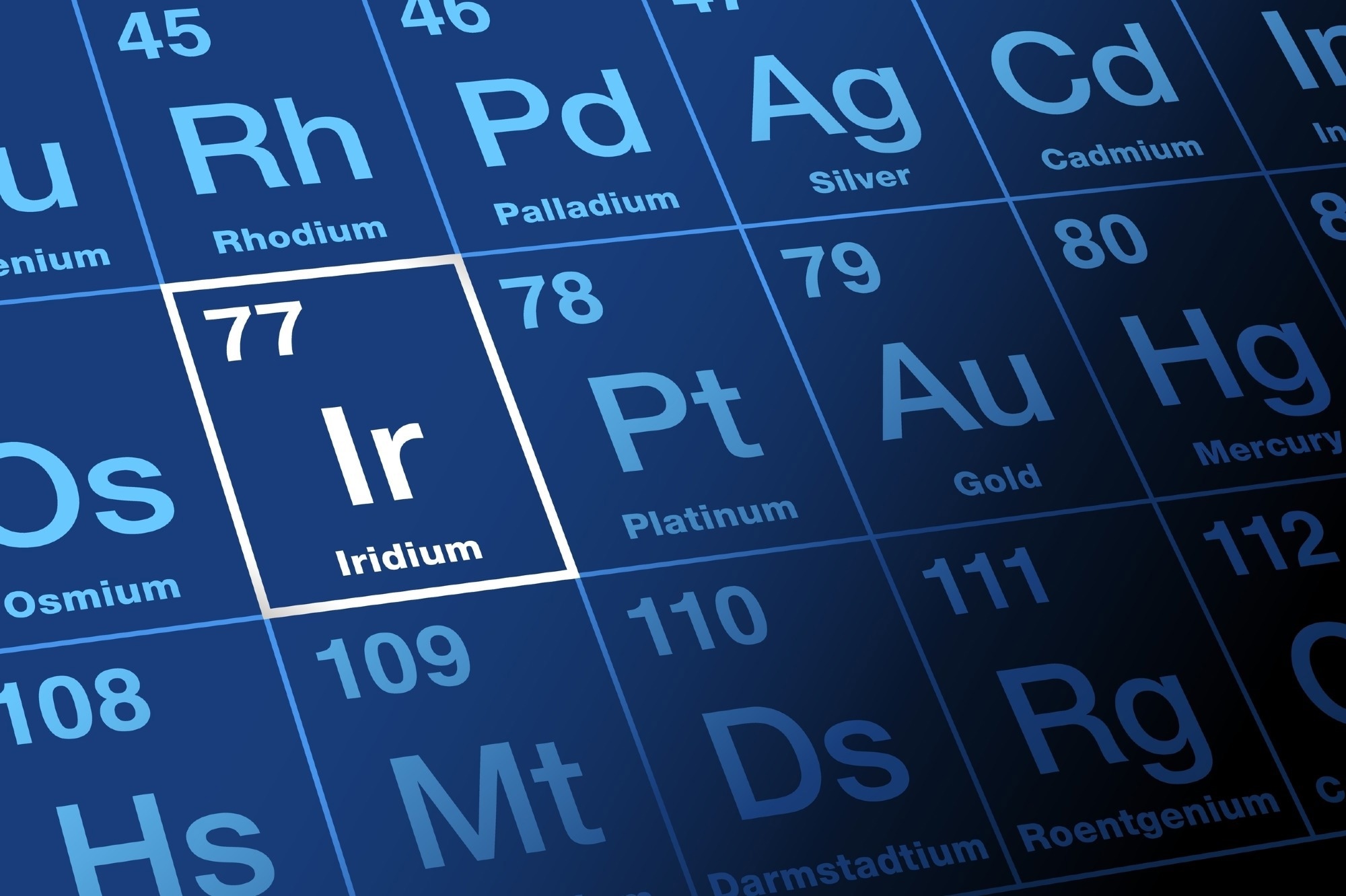A recent article in Nature Nanotechnology introduced a novel approach to enhance iridium catalyst performance by coordinating iridium single atoms (Ir1) with cobalt–iron hydroxides (Co,Fe)-OH and organic molecules. The study demonstrates how this catalyst design can improve oxygen evolution reaction (OER) efficiency while reducing the reliance on precious metals.

Image Credit: Peter Hermes Furian/Shutterstock.com
Background
The demand for efficient and sustainable energy conversion technologies has grown, particularly in the context of water splitting for hydrogen production. A key aspect of this process is the OER, where developing effective catalysts is essential for improving efficiency. However, OER efficiency is often hindered by slow reaction kinetics.
Recent progress in catalyst design has focused on atomically dispersed metal catalysts, which optimize precious metal use while enhancing catalytic activity. The incorporation of transition metal hydroxides, such as cobalt and iron, has been shown to improve the electronic properties of the catalyst, facilitating better charge transfer during the OER. The authors of this study explore the synergistic effects of combining iridium single atoms with cobalt–iron hydroxides, aiming to create a catalyst that exhibits both high activity and stability.
The Current Study
The Ir1/(Co,Fe)-OH/MI catalyst was synthesized using a straightforward immersion method. Initially, cobalt nitrate and iron nitrate were dissolved in a solvent mixture of deionized water and ethylene glycol, with the pH adjusted to approximately 4.5 using sodium hydroxide. Nickel foam, used as the substrate, was immersed in the solution to deposit the hydroxide layer, with the immersion conducted at room temperature for a set duration to achieve a uniform coating.
Post-synthesis, the catalyst was subjected to thorough characterization. High-resolution transmission electron microscopy (HR-TEM) was employed to analyze the morphology and crystalline structure, while selected area electron diffraction (SAED) confirmed its polycrystalline nature. Atomic force microscopy (AFM) was utilized to measure the thickness of the nanosheets, which was found to be between 3-4 nm, indicating a high surface area conducive to catalytic activity.
Electrochemical performance was evaluated using a two-electrode cell configuration in a 1 M KOH electrolyte. The OER activity was assessed by linear sweep voltammetry (LSV) at a scan rate of 5 mV s−1, with the overpotential measured at a current density of 10 mA cm−2. Stability tests involved holding a constant current density over extended periods and monitoring voltage response to evaluate catalyst durability. Results were benchmarked against commercial OER catalysts to gauge relative performance.
Results and Discussion
The results demonstrated that the Ir1/(Co,Fe)-OH/MI catalyst exhibited remarkable performance in OER, achieving low overpotentials and high mass activity. The asymmetric cell setup, featuring Ir1/(Co,Fe)-OH/MI and 20% Pt/C, achieved voltages of 1.79 V and 1.80 V, whereas the symmetric configuration yielded marginally lower voltages of 1.78 V and 1.79 V.
The catalyst also showed significant stability, operating continuously for 120 hours at a current density of 300 mA cm−2 in the asymmetric setup and 700 mA cm−2 in the symmetric setup. These findings indicate that the Ir1/(Co,Fe)-OH/MI catalyst not only outperforms traditional OER catalysts but also maintains its activity over extended periods.
The enhanced performance was attributed to the distinct electronic structure resulting from iridium single-atom coordination with cobalt–iron hydroxides. Atomic force microscopy (AFM) revealed a nanosheet thickness of 3-4 nm, optimizing surface area and active site exposure.
Ab initio simulations further analyzed electron redistribution around iridium sites, uncovering that the inductive interaction between atomically dispersed iridium and the transition-metal hydroxide nanosheets is central to enhancing OER efficiency by improving charge transfer and reducing energy barriers for the reaction.
Conclusion
This research represents a significant advancement in electrocatalysis by demonstrating the effectiveness of iridium single atoms coordinated with cobalt–iron hydroxides for oxygen evolution. The Ir1/(Co,Fe)-OH/MI catalyst shows improved performance over traditional iridium-based catalysts while addressing the limitations of precious metal availability and cost.
The study emphasizes the role of innovative catalyst design in enhancing energy conversion efficiency, supporting future investigations into optimized catalyst compositions and alternative materials to improve OER performance.
The use of advanced characterization techniques and computational modeling provides a detailed understanding of the catalyst's function, forming a basis for ongoing research in sustainable energy development.
Journal Reference
Zhao J., et al. (2024). Out-of-plane coordination of iridium single atoms with organic molecules and cobalt–iron hydroxides to boost oxygen evolution reaction. Nature Nanotechnology. DOI: 10.1038/s41565-024-01807-x, https://www.nature.com/articles/s41565-024-01807-x